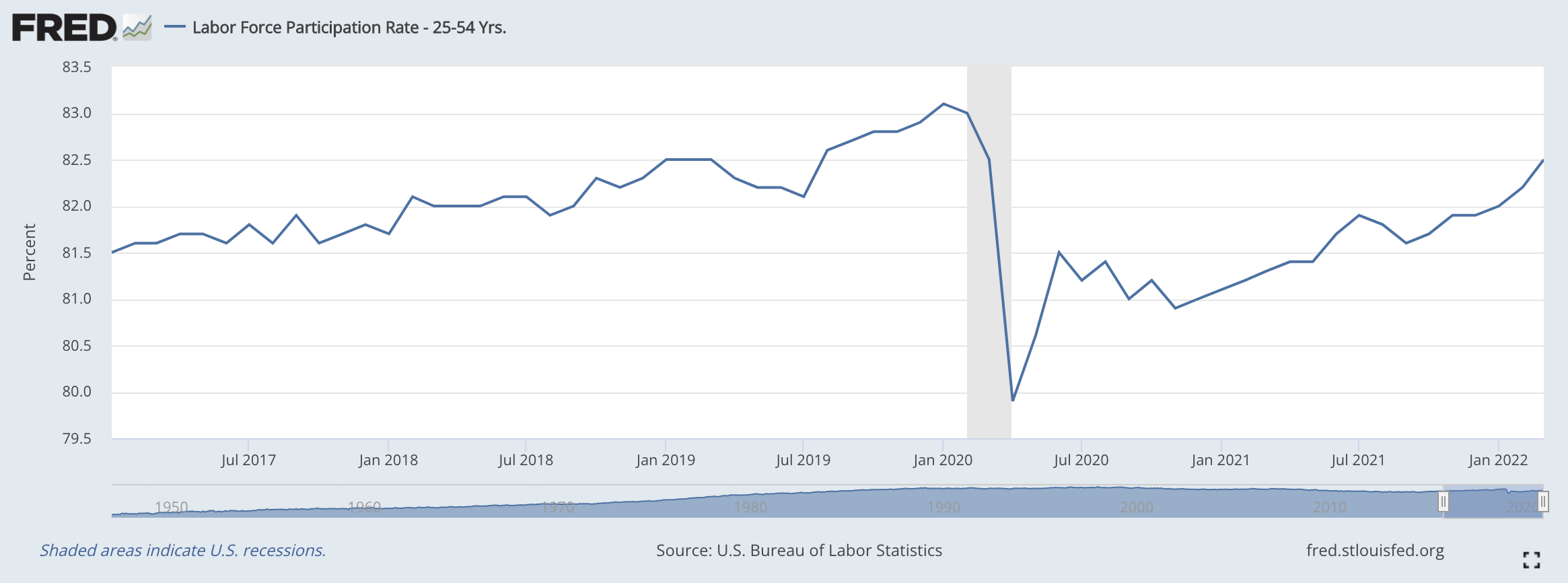Economists and organizational leaders have become increasingly concerned with the persistent flood of resignations throughout the pandemic. According to the Great Resignation narrative, these workers are leaving their roles with little to no intention of returning to the job market, leaving employers to scramble to find talent in a tight labor market.
While workers are quitting their jobs in record numbers, several lines of evidence suggest that rather than leaving the workforce entirely with no plan to return in the near future, they have either found new jobs that don’t appear in many measures of employment rates or are actively looking for a new position.
If correct, this new interpretation gives employers hope. Rather than fighting to convince those who have decided not to return to the workforce, they can focus their energy on employees simply looking for more out of their jobs.
Evidence
An alternative to the Great Resignation, sometimes called the Great Reshuffle, is supported by three lines of evidence.
Exhibit A: Labor Force Participation
If the Great Resignation narrative were correct, one would expect a significant portion of those in their prime working years to be either unemployed or not actively looking for jobs. One labor force statistic, known as the labor force participation rate, measures this very data point.
Oddly enough, the labor force participation rate for those ages 25-54 has been on a nearly continuous upward trend since the recession in the first quarter of 2020. This means the portion of employed individuals within this age range has been steadily increasing as the Great Resignation is said to have been in full force.

Exhibit B: Undetected Freelancing
Some employment measures, such as those included in the Bureau of Labor Statistics’ Current Employment Statistics Program (CES), don’t track self-employment (e.g., contracting or freelancing).
According to one estimate, 36% of the labor force freelanced in 2021. Skilled freelance jobs (e.g., computer programming, writing, design, marketing, business consulting, etc.) are steadily rising in popularity. From 2019 to 2021, the number of freelancers offering skilled labor or services increased by 8%.
These data points suggest that some of the more frequently cited pieces of evidence for the Great Resignation may underestimate employment levels. When self-employment is considered, the Great Resignation narrative becomes less compelling.
Exhibit C: The Great Flirtation
Often, job hunting occurs infrequently and in response to external pressures that have made one’s current role undesirable or unsustainable.
This trend appears to be changing as employees look for alternatives continuously and in circumstances that normally wouldn’t cause or warrant it. In one survey of over 1,500 employees, 84% of respondents said they are looking for or open to a new job in the next six months, and 42% indicated they are applying to more roles than they were pre-pandemic.
In many cases, the searching occurs without interruption and even when employees feel their roles meet most of their expectations and requirements in a phenomenon referred to as the Great Flirtation. For example, when discussing her job-hunting strategy, one worker told the British Broadcasting Corporation (BBC):
Whenever I’ve felt as though the role hasn’t been exactly as promised, I’ve looked for the next opportunity. If it’s something that’s closer to my ideal work set-up, a company that looks appealing, then I apply.
Thus, a growing number of workers are constantly seeking new opportunities, even when there are no significant pressures pushing them to find a better role.
Takeaways
While workers are leaving their jobs, their reasons for quitting along with their short-term career goals are often different than is represented by the Great Resignation narrative. For one thing, many workers who resign are doing so with the intention of finding another job, whether that be as an employee or through freelance work. Additionally, employees have much more of a “wandering eye,” looking for roles even when they are mostly satisfied with their current positions.
One immediate upshot is that organizations are not powerless when it comes to talent attraction and retention during this period of mass resignations. Workers have not been turned off from work entirely. They want to continue working but in roles or organizations that offer them something more.
While workers are looking to stay in the workforce, their tendency to job hunt continuously and shift to independent contractor work has implications for talent acquisition strategies. One of the most important steps an organization can take is to focus on its organizational culture. Employees working for companies with cultures they connect with and enjoy are likely to have a difficult time replicating it in other organizations. Likewise, those who are seeking freelance work will have no chance to reconstruct a culture of any kind. By taking an active and strategic role in their culture, leaders can cultivate a highly valued environment that attracts talent and discourages current employees from searching for greener pastures.
At the same time, culture may not be enough. The rise of freelancing means employees place a premium on flexibility. In a study conducted by Upwork, 78% of freelance workers stated they prefer contract work because it provides them with greater control over their schedules, while 73% cited the ability to “work from a location of [their] choosing.” This means employers will have to continue offering flexibility even as they initiate their return-to-office plans. Workers have gotten used to the freedom afforded by the all-remote arrangements implemented throughout the pandemic. Many are hoping to preserve as much of it as possible. Whether it be a hybrid schedule, a four-day workweek, unlimited PTO, or something else entirely, flexibility must remain at the top of organizations’ talent attraction and retention strategies.












